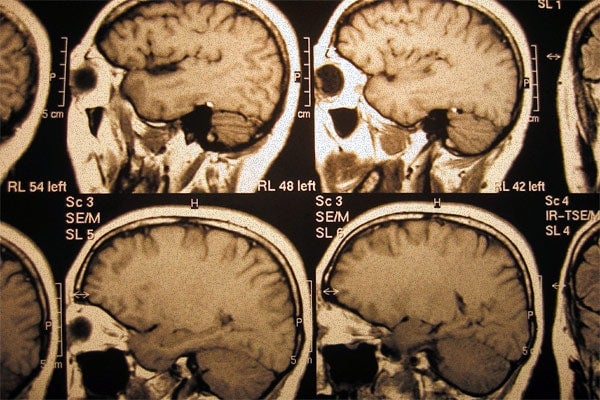
The Tanz Centre: 20 years of discovery
Published: May 29, 2012
The need to better understand, treat and even prevent diseases such as Alzheimer’s and Parkinson’s grows increasingly urgent as Canada’s population ages. In this first instalment of a two-part series on the University of Toronto’s world renowned Tanz Centre for Research in Neurodegenerative Diseases, writer Niamh McGarry looks at how U of T scientists are leading the way.
There will be no single “lucky break” that provides an overnight solution to neurodegenerative diseases, predicts Professor Peter St George-Hyslop, director of the University of Toronto’s Tanz Centre for Research in Neurodegenerative Diseases.
“Despite more than a hundred years looking at Alzheimer’s and Parkinson’s diseases, no one has made that serendipitous discovery that instantaneously provides a cure,” says the distinguished neurologist and molecular geneticist.
Meanwhile, an increasingly elderly population accentuates the burden of these diseases worldwide.
“These disorders are very complicated; they occur in the most complex organ of the body, housed in a place that is very difficult to get at,” St George-Hyslop says.
“By working from an understanding of the underlying mechanisms that are activated by causative factors, you get a much more rational idea of what the appropriate therapeutic targets are, and how you can diagnose disease before you’ve got substantial damage.”
The Tanz Centre was founded in 1990 to tackle these fundamental challenges presented by neurodegenerative diseases. In the last two decades it has strategically recruited scientific investigators with complementary skills, expertise and leading-edge scientific methods to create a highly productive and innovative institute.
“While the institute largely focuses on Alzheimer’s disease (AD), we long ago realized that by also working on other neurodegenerative diseases, we learn useful things relevant to AD, and that goes in both directions,” says St George-Hyslop.
As a result, the Centre also has strong research programs in Parkinson’s disease, amyotrophic lateral sclerosis (ALS), also known as Lou Gehrig’s disease, and prion diseases, sometimes referred to as Creutzfeldt-Jakob disease in humans or “mad cow disease” in cattle.
Research scientists at the Tanz Centre first made international headlines in 1992 when they narrowed in on a region of chromosome 14 that appeared to be responsible for many of the inherited cases of early-onset Alzheimer’s disease. Three years later, they were the first worldwide to identify the actual gene, presenilin 1, on chromosome 14 that causes this form of very aggressive AD. They followed that achievement with the discovery of a related, early-onset, AD-causing gene called presenilin 2, a few months later.
The function of the presenilin gene products is related to the generation of the amyloid-beta peptide, a substance that collects in the brains of Alzheimer’s patients in so-called amyloid plaques and is thought to be a key factor in the initiation of the disease.
The presenilin discoveries were a breakthrough that placed the fledgling Centre on the international research map. Still, the discovery of presenilins was considered by some to be a “flash in the pan,” says Tanz Centre researcher and Jeno Diener Chair in Neurodegenerative Disease, Professor Paul Fraser.
“Then we discovered nicastrin.”
The Centre has shown presenilins work in concert not only with nicastrin but also with a number of other proteins, which together comprise a distinct and previously unknown molecular machine that plays a key role in AD, but which is also essential for life. Multiple possibilities for therapeutic intervention emerged from these findings, some of which are being tested in ongoing clinical trials.
Genetics offers some of the most powerful tools that have been used within the Centre to enable groundbreaking discoveries in Alzheimer’s disease, Parkinson’s disease and frontal temporal dementia. Recently, genetic research at the Centre contributed to the discovery of a gene (C90RF72) responsible for more than 30 percent of ALS/frontal temporal dementia cases.
"A particular strength of genetics is that it can provide a firm causative link between a gene and a disease,” says Tanz Centre researcher and Department of Medicine Professor Ekaterina Rogaeva. “Once established, and if the linkage is strong, then genetics may also enable disease to be diagnosed pre-symptomatically.
"In the future, genetics could provide the key to selecting not only the most suitable cohort of individuals for a given clinical trial but may be used also to target individuals at risk of developing Alzheimer’s disease for early intervention.”
But it is not all about genetics at the Tanz Centre. In fact, the Centre’s philosophy is based on a multi-faceted approach to research, where many tools and methods are brought together. One example is the creation of an Alzheimer’s disease mouse model in 2000, which develops amyloid plaques in the brain, exhibits cognitive and memory impairment and accelerated mortality. The mouse model, known as TgCRND8, became famous and has been used around the world. In one of these studies, conducted by Tanz researchers, vaccination of TgCRND mice with the amyloid beta peptide elicited an immune response that partially prevented or reversed AD-related cognitive and memory impairments.This finding paved the way for ongoing clinical trials of second generation vaccines.
Immune reagents also play a role in ongoing ALS research at the Centre, exploring the therapeutic use of the first antibody that selectively labels the misfolded form of a protein implicated in this disorder.
Because proteins usually work in small interactive groups, once a gene has been linked to a disease, it can be very enlightening to identify its “partners in crime,” says Tanz researcher Gerold Schmitt-Ulms, a Professor in the Department of Laboratory Medicine and Pathobiology.
When Schmitt-Ulms applied this strategy in 2009 to the prion protein, his team not only identified other proteins that bind to it, they also unexpectedly discovered the evolutionary origins of prion genes.
“This finding solved an enigma in prion research: it linked the prion gene, which had no apparent role aside from its causative involvement in an invariably fatal disease, to a larger family of genes of known function,” says Schmitt-Ulms. “The hope with a discovery such as this is that one can learn something that will be useful to devise a disease intervention strategy.”
An ideal drug for the treatment of neurodegenerative diseases would be one that could be taken in oral form, would easily pass into the brain through the so-called blood-brain barrier, be effective at dissolving amyloid plaques and, at the same time, not react with parts of the body it is not targeting. A few years ago, Tanz researchers identified a small sugar molecule, scyllo-inositol, which seemed to combine all of these features in tests on the TgCRND Alzheimer’s mouse model. Six years later, plans for a Phase III human clinical trial led by a pharmaceutical consortium are underway.
Despite the above, and many more contributions by the Centre, its success should not be measured by individual discoveries alone, cautions Fraser.
“While the initial discovery is important, it is incrementally adding to these contributions that have made a difference,” he says. “The Centre is designed as a place where people with very different skill sets and interests work together.
“Everyone has their own complementary interests and technological expertise, so each person has their own piece of territory, but all mesh perfectly into one working Centre.”



